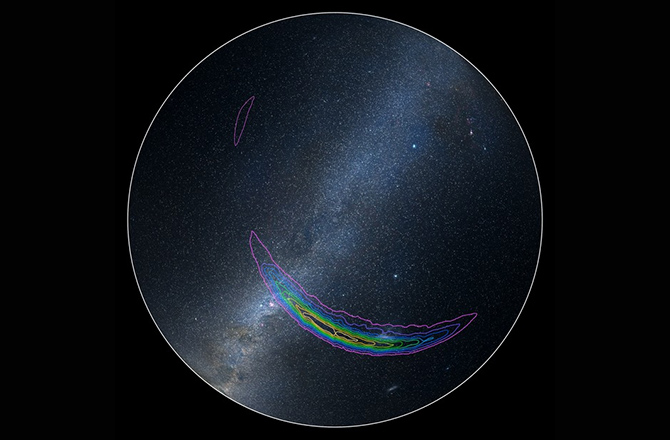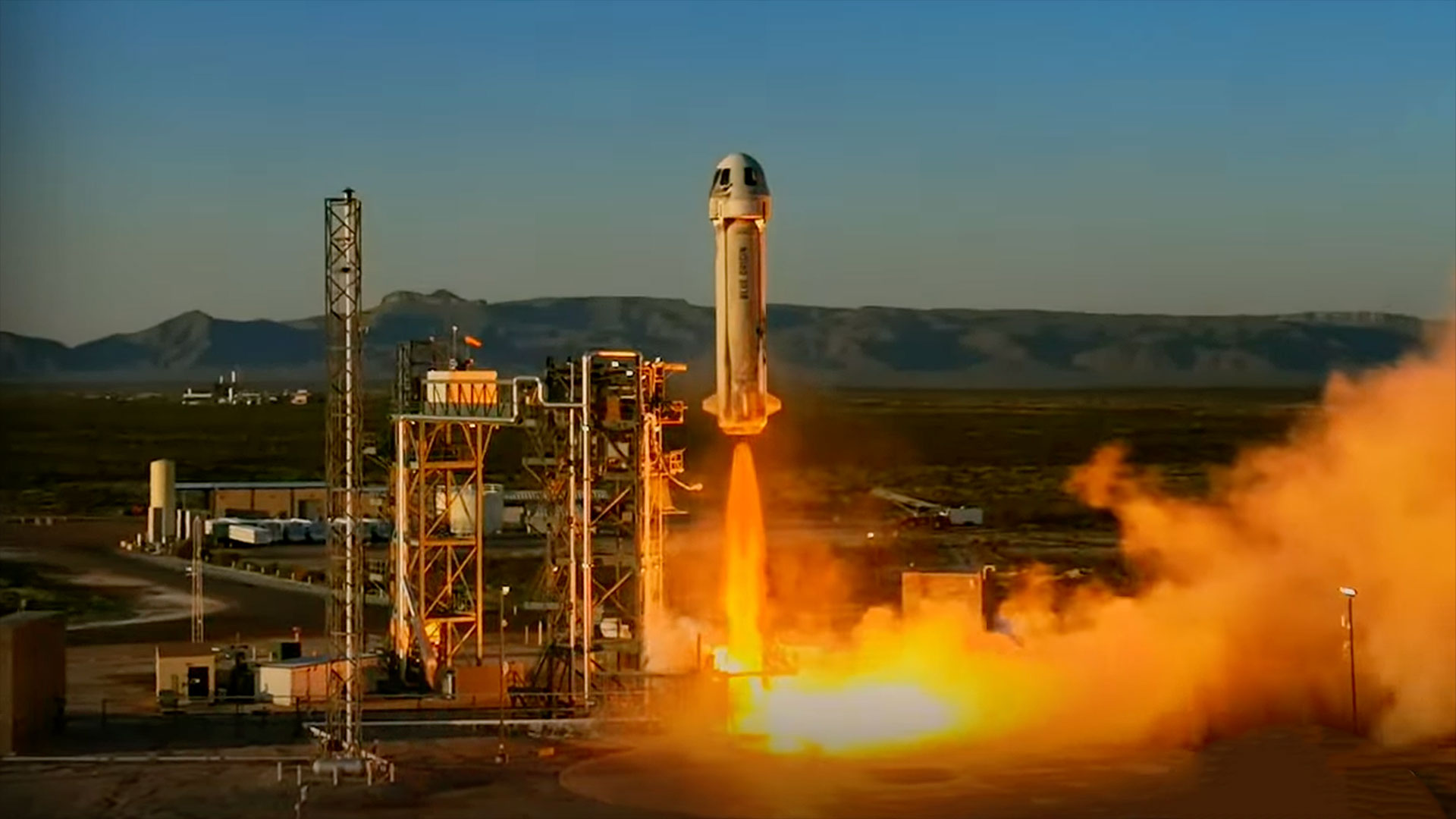Where Did Those Gravitational Waves Come From? There's a Map

With today’s historic and incredibly exciting announcement of the first ever detection of gravitational waves came the news that these waves were generated by two merging black holes approximately 1.3 billion light-years away — an astrophysical event that is mind-blowing in its own right. So the next question that comes to mind is, unsurprisingly, in which direction did this black hole merger occur?
As it turns out, scientists of the Laser Interferometer Gravitational-Wave Observatory (LIGO) already have an answer, albeit a very general one.
ANALYSIS: We Just Heard the Spacetime 'Chirp' of Black Hole Rebirth
As previously reported, LIGO is composed of two stations — one in Washington and the other nearly 2,000 miles away in Louisiana. The reason for having 2 stations is logical: should a gravitational wave pass through our volume of space (yes, these spacetime ripples pass through the Earth and us unimpeded), it must be detected by both stations to be confirmed as being “real” and not a false positive caused by some kind of local disturbance near one of the stations. Secondly, having 2 stations allows LIGO scientists to triangulate the signal to derive a very general idea as to where these waves are coming from.
Thursday’s grand announcement pointed out that the Livingston station (Louisiana) “heard” the gravitational wave "chirp" 7 milliseconds before the Hanford station (Washington) on Sept. 14, 2015. As gravitational waves travel at the speed of light, this timing difference confirmed that the two detections were indeed the same event. Scientists were immediately able to deduce the direction the gravitational waves were traveling.
NEWS: Gravitational Waves Detected for First Time
Now, the LIGO collaboration has released a map of the Southern Hemisphere skies, giving us a glimpse at the promising future of gravitational wave astronomy. In the map, contours have been added that represent the different probabilities for where the signal originated. The outermost purple line represents a 90 percent certainty that the signal’s source (the colliding black holes) is contained within that area. The innermost white contour line highlights a possible source region to a 10 percent certainty.
Breaking space news, the latest updates on rocket launches, skywatching events and more!
The band of stars through the middle of the image is the edge-on disk of the Milky Way and the Large Magellanic Cloud and Small Magellanic Cloud (two small nearby galaxies) can also be seen in the bottom portion of the image. It is worth noting that, although there is some uncertainty in the black hole’s distance, its location is far beyond our own galaxy and Local Group of galaxies.
EXPLAINER: What You Need to Know About Gravitational Waves
As more gravitational wave detectors go online and their observations added to LIGO’s detections, better precision of the locations of gravitational wave sources will be pinpointed, making for highly detailed gravitational wave maps of the cosmos. So though it may not be precise, this is the first map of its kind where inside its contours two black holes merged 1.3 billion years ago.
Source: Caltech
This article was provided by Discovery News.
Ian O'Neill is a media relations specialist at NASA's Jet Propulsion Laboratory (JPL) in Southern California. Prior to joining JPL, he served as editor for the Astronomical Society of the Pacific‘s Mercury magazine and Mercury Online and contributed articles to a number of other publications, including Space.com, Space.com, Live Science, HISTORY.com, Scientific American. Ian holds a Ph.D in solar physics and a master's degree in planetary and space physics.
